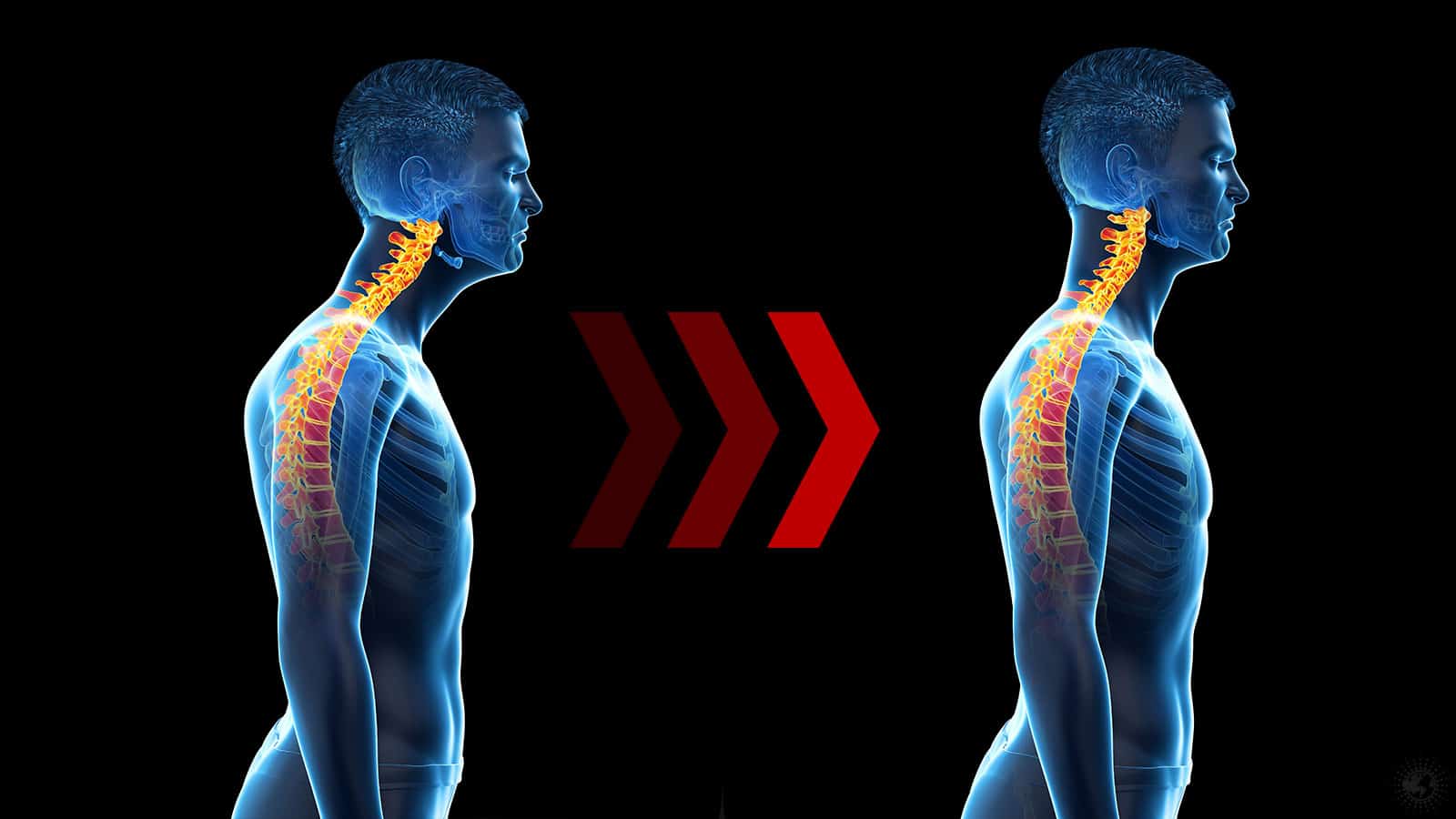Text neck syndrome can cause pain from constantly craning your neck to see the screen. Since many people seem to be attached to their smartphones, this syndrome has become increasingly common. The more time you spend looking down at your phone or other mobile devices, the more text neck symptom will impact you.
Talking on the phone doesn’t seem to cause the issue, but frequently bending your neck to text or play a game can. Your smartphone is a way to call friends and family, do research, take a picture, and do countless other things. For some people, staring at the phone happens more frequently than anything else.
However, text neck syndrome can even happen to people that aren’t constantly on their phones. Anytime you lower your head to look at your smartphone, you increase the risk of developing text neck syndrome.
When you overuse your neck or overextend it for frequent extended periods, it leads to pain. With the fast-paced world we live in, it seems that constantly communicating via text or other messaging and social media apps is hard to resist. If you have this problem, you must implement a lifestyle change before it becomes a chronic condition.
What is Text Neck Syndrome?
Text neck syndrome is not an official medical diagnosis. Instead, it is a term used to explain repetitive stress injury from looking down at a mobile device.Your neck contains a complex section of your upper spine, the cervical spine. The cervical spine has seven spinal vertebrae and 26 muscles that support your head and allow a range of motion. While it can move up and down or side to side, it isn’t designed to stay extended.
Since the average head weighs ten to twelve pounds, your spine and muscles come equipped to balance it. Your neck works like a spring to suspend your head over things you’re doing, extending the neck and resulting in poor posture. The further your neck extends downward, the more the unnatural strain and force affect your body.
When you keep your head lowered to read texts or scroll social media, the pressure can increase to sixty pounds. This excess pressure leads to severe neck pain, and the issue is becoming more widespread as people spend more time on devices.
Text Neck Symptoms
The symptoms of text neck are painful and uncomfortable. If you notice that you have any, avoid looking down and start making a lifestyle change. The symptoms include:
- Pain in the upper back, neck, or shoulders
- Intense stabbing sensation
- Forward head posture with rounded shoulders
- Reduced mobility in the neck, upper back, or shoulders
- Headache
- Increased pain when the neck flexes forward
- Tingling, numbness, or weakness in the neck or shoulder area
- Balance issues
- Jaw pain
- Painful muscle spasms
- Tightness across the shoulders
In more severe cases, you might experience:
- Early-onset arthritis
- Spinal degeneration
- Muscle weakness
- Disc compression
- Loss of lung capacity
- Abnormal curvature or rounding of the upper back, or a flattening of thoracic kyphosis
Text Neck Syndrome Causes
There are not many causes of text neck syndrome, but there are a few, including:
- Frequently looking down at a mobile device for extended periods of time
- A strained muscle in the back or side of your neck due to overstretching of muscle fibers and tendons
- Hanging your head forward, increasing the force on your neck
- Stressed muscles, joints, and ligaments from being overworked
How is Text Neck Syndrome Treated?
If you see a doctor for the pain from text neck, they will ask a series of questions and examine before suggesting treatment options. The doctor will ask about your medical history, family health history, exercise and diet habits, medications, and symptoms. Then, they will do a physical exam to check for anything unusual.
Treatment options might include these.
- Exercises: Exercise can help alleviate neck pain and reduce forward head posture. It addresses and reverses muscle imbalances, restoring a better-aligned posture. Choose low-impact exercise if you aren’t already experienced or comfortable, and then work your way into more intense activities.
- Stretches: Muscle imbalances typically develop from text neck, but stretches can alleviate the pain. Your deep cervical flexor muscles elongate while the muscles at the back of your neck toward the base of your head shorten. Plus, the upper back muscles elongate, and the chest muscles shorten.
- Being Mindful of Postural Habits: When using a mobile device, being mindful of your posture can help reverse the damage. Make it a habit to check your neck position as you use your mobile devices.
- Cut Back on Mobile Device Use: You can still use your smartphone and other devices with moderation. Consider cutting back on the amount of time you spend on them, though. Cutting back will promote healing and ease the neck pain associated with text neck.
- See a Chiropractor: A chiropractor can manually adjust your spine, easing neck pain and treating misalignment from excess pressure. They can also recommend things you can do at home to promote correct alignment and take care of your body.
- Practice Meditation: Meditation promotes relaxation of tired and aching muscles. It helps you relax each muscle group as you work through the body, focusing on the painful areas.
- Physical Therapy: A physical therapist can design a program specific to your needs. The program will include stretches and exercises to reverse the condition and alleviate neck pain. Your doctor might recommend a program to promote mobilization, stretch tight muscles, encourage strengthening, and retrain posture.
- Treating Nerve Pain: Text neck syndrome can cause degeneration and compression of nerves in the neck. When this happens, nerve pain occurs, requiring treatment for nerve pain to alleviate text neck.
- Ice or Heat Packs: Try rotating ice and heat packs when you experience pain from text neck. It can ease the pain while reducing inflammation.
- Get a Professional Massage: A professional massage therapist can pinpoint the areas with tense or overworked muscles. As the masseuse applies pressure and massages the surrounding areas, the text neck symptoms will ease. Sometimes, they’ll massage spots that seem unrelated but turn out to be effective for your discomfort.
- Acupuncture: Acupuncture involves tiny needles being places just below the surface of your skin. You must visit a professional for this treatment method, as they know the correct places to put the needles. They place them at pressure points throughout the body that helps with pain and other issues.
Text Neck Syndrome Prevention
Since most people use a smartphone, text neck syndrome should be a concern. Luckily, there are things you can do to prevent it, including:
- Lift Your Phone Higher: Move your smartphone or other devices closer to eye level. When you do this, you won’t have to tilt your head forward, preventing excess pressure. If you keep it low for privacy purposes, try turning down the brightness so that it’s harder for others to see when you hold it up higher.
- Take Frequent Breaks from Your Device: Spending time away from your phone or any other type of head-forward posture can prevent text neck syndrome. You might find it helpful to set the alarm or automatic reminders to take breaks after so long. Another way to have more breaks is to set specific times to use your phone and avoiding it any other time.
- Practice Good Posture: Practicing good posture requires standing straight with your chin tucked in and shoulders pulled back. This keeps the body aligned in its natural position and prevents the pain of text neck. Good posture also supports the health of your bones, joints, and muscles.
- Arch and Stretch: Arch your neck and upper back once in a while to ease muscle pain. Anytime you feel tension settling in, do this backward arch to help prevent further issues. Stretching can help rebalance your body and your neck movements, providing better posture and less pain.
- Exercise Regularly: Regular exercise is beneficial all around, but it can also help handle excess stress. When your back and neck are strong and flexible, the additional pressure from looking down won’t be as detrimental. Find exercises that target these areas, such as yoga or Tai Chi.
- Roll Your Neck and Shoulders: When you roll your neck and shoulders, it relieves built-up tension. Anytime you feel a little tense, do this before it gets worse and progresses.
- Avoid Repetitions of Movements Like Swiping or Typing: If your body is already in an unnatural position, high repetitions of these movements can cause pain. You’ll be using the same muscle repeatedly without switching positions or resting.
Final Thoughts on Text Neck Syndrome: Symptoms, Causes, Diagnosis, and Treatment
As text neck syndrome becomes more common, recognizing the symptoms and causes can help you. When you know what causes it, you can work on preventing the syndrome and neck pain. If you think you already have text neck, getting a professional diagnosis can help.
A medical professional can help you come up with a treatment plan. They will recommend a few options, giving you the best information to decide. Additionally, they can help you find ways to prevent it from reoccurring in the future.
Knowing the symptoms, causes, diagnosis, and treatment options for text neck syndrome can be life-changing. Many people don’t realize how detrimental looking down at a smartphone can be. Help yourself stay healthy and feel good by making a few simple lifestyle changes when it comes to your phone.
















 Community
Community

